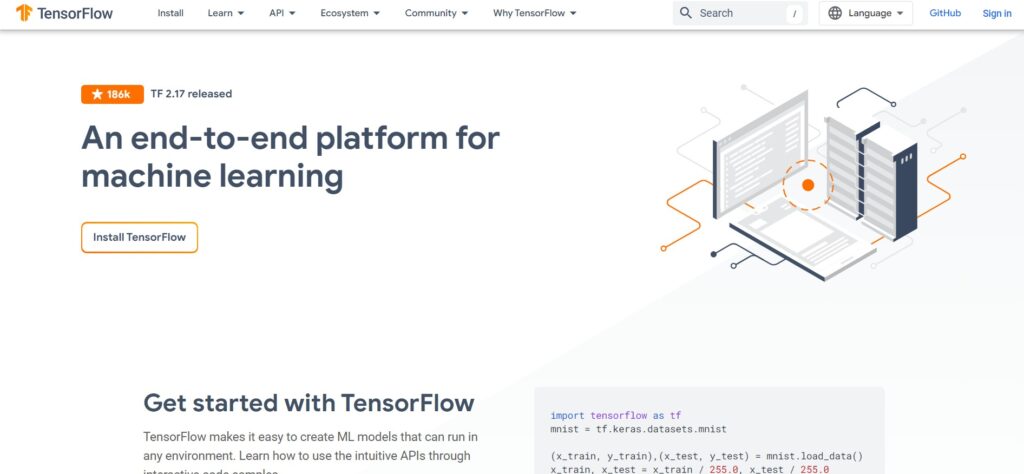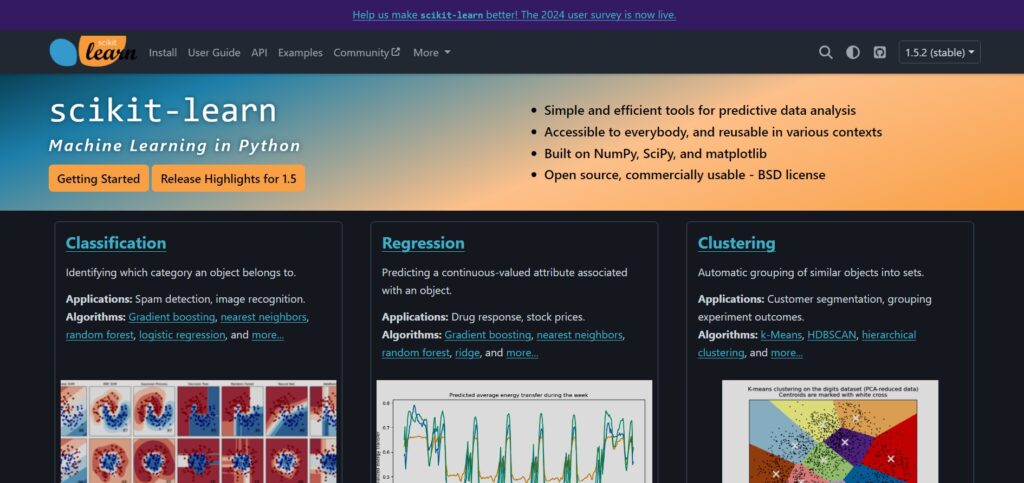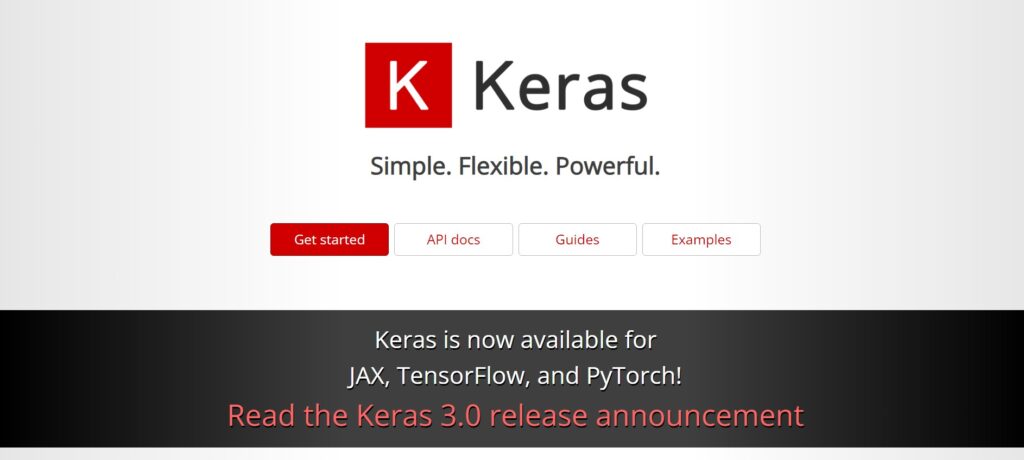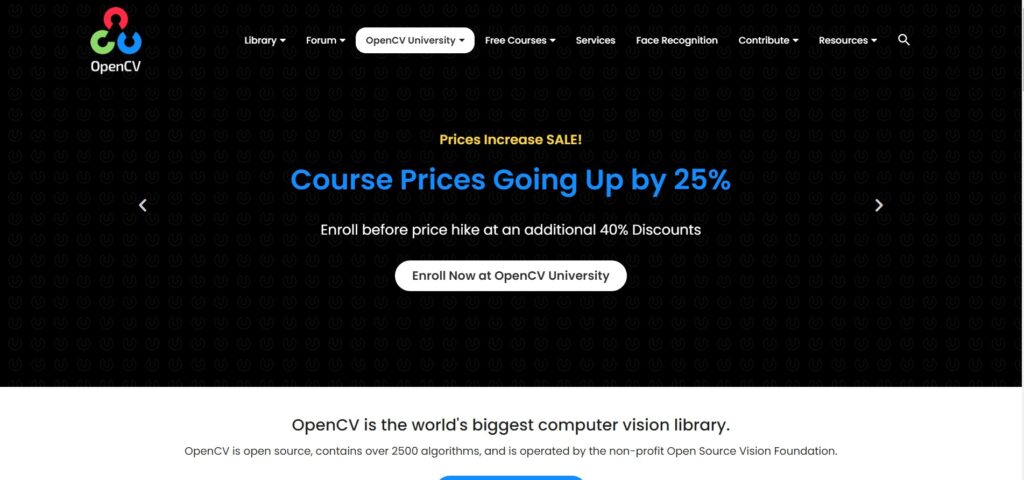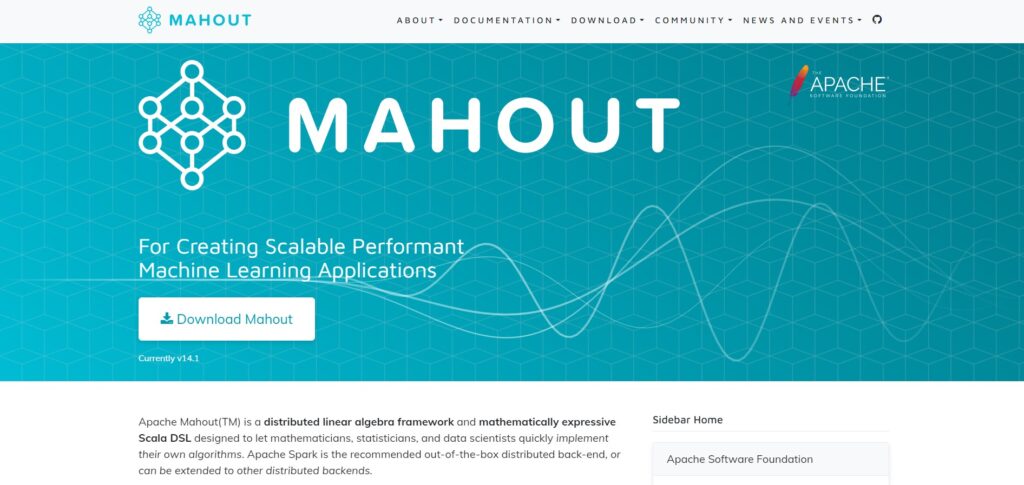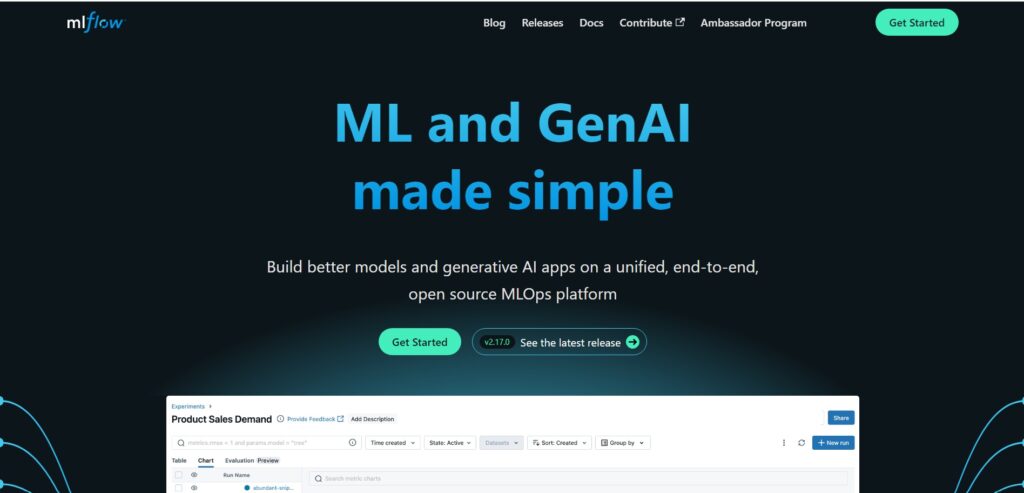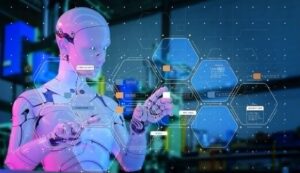Open Source AI Tools
Top 10 Open Source AI Tools
Artificial intelligence is advancing at a remarkable pace, influencing nearly every sector. Its applications range from virtual assistants and chatbots to self-driving vehicles and medical diagnostics.
As AI becomes increasingly powerful and widespread, it is crucial to ensure that open-source AI tools remain accessible to developers, researchers, and enthusiasts alike. These tools democratize access to cutting-edge AI technologies without the burden of costly proprietary licenses.
In this article, we’ll explore the top 10 open-source AI tools to experiment, Let’s get started!
1. TensorFlow
TensorFlow is a versatile open-source machine learning framework developed by Google. It allows developers to create and train complex machine learning models with high-level APIs as well as low-level control for custom model building.
TensorFlow is widely used for deep learning applications and supports a range of tasks across different domains, including computer vision and natural language processing (NLP).
Use Cases:
- Image Recognition: Build applications to classify images in sectors like healthcare (e.g., detecting tumors in medical images).
- Natural Language Processing (NLP): Develop chatbots or translation systems that understand and process human language.
- Reinforcement Learning: Create AI agents for gaming or robotics that learn optimal strategies through trial and error.
- Time Series Forecasting: Analyze historical data to predict future trends, such as stock prices or weather patterns.
- Speech Recognition: Implement systems that transcribe spoken language into text for applications like virtual assistants or transcription services.
2. PyTorch
PyTorch is an open-source machine learning library created by Facebook that emphasizes flexibility and speed. It is particularly popular in the research community due to its dynamic computation graph, allowing for intuitive model building and debugging.
Use Cases:
- Deep Learning Research: Experiment with advanced neural network architectures like transformers or GANs for cutting-edge research.
- Computer Vision: Implement applications for tasks like image segmentation or object detection in autonomous vehicles.
- Natural Language Processing: Create models for sentiment analysis or text summarization.
- Generative Models: Develop systems that generate new content, such as realistic images or human-like text.
- Robotics Simulation: Use reinforcement learning to train robotic agents in simulated environments.
3. Scikit-Learn
Scikit-Learn is a widely used Python library for machine learning that provides simple and efficient tools for data mining and data analysis. It is built on top of other popular libraries such as NumPy, SciPy, and matplotlib.
Use Cases:
- Predictive Modeling: Build models to forecast sales, customer churn, or market trends using historical data.
- Data Preprocessing: Clean and transform raw data to prepare it for machine learning applications.
- Clustering: Identify natural groupings in data, such as customer segments for targeted marketing.
- Feature Selection: Determine the most relevant features for improving model accuracy and reducing complexity.
- Anomaly Detection: Implement systems to identify unusual patterns or outliers in datasets, such as fraud detection.
4. Keras
Keras is a high-level neural networks API that runs on top of TensorFlow, allowing for quick and easy model prototyping. It is user-friendly and modular, making it accessible to beginners while still offering the flexibility needed for advanced users.
Use Cases:
- Image Classification: Rapidly create models for categorizing images in various industries, such as fashion or agriculture.
- Text Generation: Build models that can generate human-like text based on existing data, useful for creative writing or automated content generation.
- Time Series Prediction: Develop forecasting models for stock prices, sales forecasting, or demand planning.
- Medical Diagnosis: Design systems that can analyze medical images and assist in diagnosing diseases.
- Speech Recognition: Implement voice-based applications that convert spoken language into text for transcription.
5. OpenCV
OpenCV (Open Source Computer Vision Library) is a comprehensive library focused on real-time computer vision. It provides thousands of optimized algorithms for various tasks related to image and video processing.
Use Cases:
- Facial Recognition: Implement secure authentication systems or social media applications that recognize users.
- Augmented Reality: Create interactive experiences by overlaying digital content on live camera feeds.
- Automated Surveillance: Develop intelligent monitoring systems that can detect anomalies or specific activities in video feeds.
- Object Tracking: Build applications that follow the movement of objects in real-time for security or sports analytics.
- Optical Character Recognition (OCR): Create systems that convert images of text into machine-readable formats.
6. Hugging Face Transformers
The Hugging Face Transformers library is designed specifically for natural language processing (NLP) tasks. It provides a wide range of pre-trained models and tools to easily implement state-of-the-art NLP techniques.
Use Cases:
- Text Classification: Automate the categorization of documents, customer reviews, or support tickets.
- Conversational Agents: Build intelligent chatbots that can engage users in natural conversations.
- Language Translation: Develop applications that translate text in real-time between multiple languages.
- Named Entity Recognition (NER): Extract specific entities (e.g., names, locations) from text for data analysis.
- Text Summarization: Create systems that condense articles or documents into concise summaries.
7. Apache Mahout
Apache Mahout is a scalable machine learning library primarily aimed at creating algorithms that work with large data sets. It focuses on clustering, classification, and collaborative filtering.
Use Cases:
- Recommendation Systems: Develop personalized product recommendations for e-commerce platforms based on user behavior.
- Clustering: Group similar items in large databases for targeted marketing or customer segmentation.
- Data Mining: Analyze large data sets to identify trends, patterns, or anomalies.
- Collaborative Filtering: Implement systems that suggest items based on user preferences and behaviors.
- Market Basket Analysis: Discover associations between products purchased together to optimize product placement and promotions.
8. Fastai
Fastai is a high-level library built on top of PyTorch, designed to simplify the training of deep learning models. It offers high-level abstractions for various tasks while still allowing for fine-tuning and customization.
Use Cases:
- Image Classification: Quickly build models to classify images across diverse applications, from medical diagnostics to wildlife monitoring.
- Natural Language Processing: Create models for tasks like text summarization or sentiment analysis.
- Structured Data Analysis: Develop predictive models using tabular data from various industries.
- Computer Vision: Implement solutions for image generation, segmentation, and detection tasks.
- Transfer Learning: Utilize pre-trained models to improve performance on related tasks with less data.
9. MLflow
MLflow is an open-source platform that manages the entire machine learning lifecycle, from experimentation to deployment. It provides a suite of tools to track experiments, package code into reproducible runs, and manage and deploy models.
Use Cases:
- Model Management: Organize and version machine learning models for easy retrieval and deployment in production.
- Experiment Tracking: Monitor and compare different training runs to identify the best-performing models.
- Collaborative Projects: Facilitate team collaboration by providing a centralized repository for experiments and models.
- Model Deployment: Streamline the deployment of models to various platforms, including cloud and on-premises environments.
- Monitoring Model Performance: Implement systems to track and evaluate model performance over time, ensuring they remain effective.
10. Rasa
Rasa is an open-source framework designed for building conversational AI applications, such as chatbots and voice assistants. It provides tools for natural language understanding (NLU) and dialogue management, enabling developers to create intelligent systems that can interact with users.
Use Cases:
- Customer Support Bots: Develop bots that assist customers with inquiries, provide troubleshooting steps, and escalate issues when needed.
- Interactive Voice Response (IVR): Build voice assistants that can understand and respond to user commands in customer service scenarios.
- E-commerce Assistants: Create intelligent shopping assistants that guide users through product selections and purchases.
- Personalized Recommendations: Implement systems that suggest products or services based on user interactions and preferences.
- Multi-turn Dialogues: Develop bots capable of managing complex conversations, maintaining context and relevance across multiple interactions.
Numerous robust open-source AI tools are available at no cost. The tools mentioned above enable you to build and experiment with machine learning, deep learning, reinforcement learning, and beyond.
Whether you’re a beginner or an expert in AI, exploring these open-source options can enhance your skills without any financial investment. Make the most of these free resources and the thriving communities that support these leading open-source AI tools.

